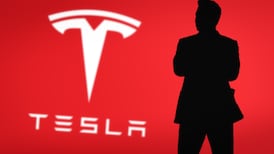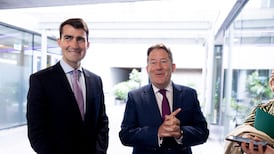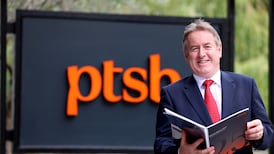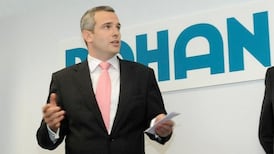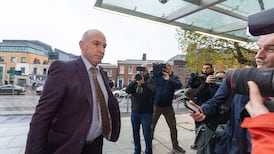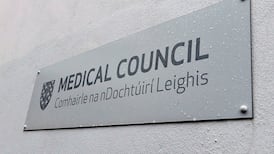“No other country in the EU fears Donald Trump’s tariffs and the consequences of his global trade war more than Ireland,” the Telegraph wrote in the wake of Trump’s so-called Liberation Day tariff announcement in April.
There’s no sugar-coating it; the State is uniquely exposed to Trump’s assault on the global trading system.
A significant proportion of employment, tax receipts and exports is now dependent on a small cluster of US multinational firms.
How the executives that run these enterprises respond to Trump’s America First agenda, something that’s entirely out of our hands, will determine the size and scale of the impact here.
READ MORE
Behind the noise of tariffs, however, the economy remains in a relatively healthy state.
Growth – even with the imposition of 15 per cent tariffs on exports to the US as part of the recent EU-US trade deal – is expected to be about 2 per cent this year (possibly higher), twice the rate that is being forecast for the euro zone as a whole.
Employment, arguably the best indicator of economic health, remains at an all-time high of 2.8 million, while evergreen tax receipts are allowing the Government to simultaneously spend, save and pay down debt.
Ireland’s budgetary largesse is a mirror image of the UK’s depleted position, which has dogged Keir Starmer’s administration since it took office in 2024.
With wages rising faster than inflation, workers here – cumulatively speaking – will experience another year of real income growth.
This will drive consumption, the mainstay of any economy, underpinning growth.
Based on the Central Bank of Ireland’s card spending and ATM withdrawals, consumer expenditure grew by about 6 per cent in nominal terms in the first half of the year.
That’s become a more reliable gauge of consumer spending than the national accounts compiled by the Central Statistics Office, which have been revised up in 15 of the last 17 quarters.
With the economy operating close to full employment, with real wages growing, and with price pressures in domestic sectors like food and hospitality continuing to increase, the Irish Fiscal Advisory Council (Ifac) insists there is no need for further budgetary stimulus.
Minister for Finance Paschal Donohoe’s proposed €9.4 billion budget spend – outlined in the recent summer economic statement – entails a 7.3 per cent hike in spending, another breach of the Government’s 5 per cent spending rule.
“The Irish economy is entering an uncertain period in a strong position,” says Ifac chief economist Niall Conroy.
“Since 2019, the number of people at work has increased by almost 500,000. Multinationals and public sector-dominated areas account for two-thirds of this increase,” Conroy says.
He also notes that monetary policy (with the European Central Bank cutting interest rates from 4 per cent to 2 per cent since the middle of last year) is providing significant tailwind support to the economy.
“At the moment, budgetary policy is also adding to demand,” says Conroy.
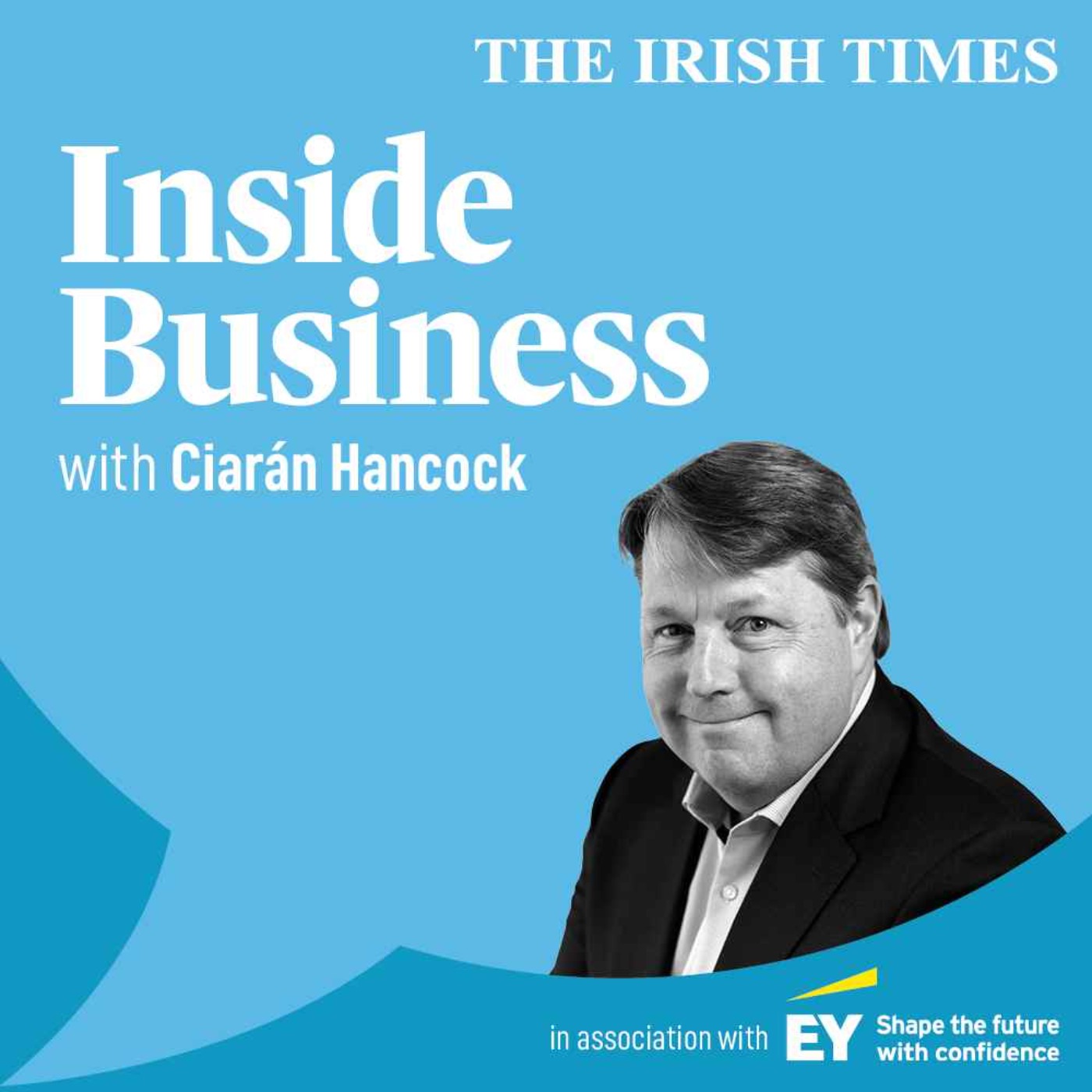
Why is Ireland not considered a truly rich country?
“This is not required as the economy is already performing well,” he says. “If there was a downturn in the economy, then it would be appropriate for budgetary policy to provide support. This was done successfully during Covid-19.”
Typically, economists want governments to use budgets to push against the prevailing trends: to spend in recessionary times and cut back when the economy gets too hot.
But that’s easier said than done when the health budget keeps accelerating (on the back of an increased and ageing population) and when there are such chronic infrastructural deficits.
Despite the seemingly endless news flow about tariffs, these deficits – in water supply, energy, housing and planning issues that amplify them – pose a potentially bigger threat to the State’s economic model.
In July, online retail giant Amazon signalled it had decided not to proceed with a €300 million investment in Dublin, which would have employed more than 500 people. The proposed plant, which would have been an artificial-intelligence testing and manufacturing facility, was kiboshed because the multinational believed it had not been given sufficient reassurance that it would get adequate power for the project.
Intel, one of the State’s biggest employers, with more than 4,900 staff mainly at its Leixlip plant, recently pinpointed energy costs in Ireland as out of kilter with other countries and the chief challenge to its operations here.
A report by the International Monetary Fund, published in July, estimated that our stock of physical infrastructure lags that of its international peers by approximately 32 per cent.
Central Bank of Ireland governor Gabriel Makhlouf has also warned that Government spending would need to increase by about €265 billion over the next 25 years to cover the costs of an ageing population, increased housing needs and reducing emissions.
“An obvious policy mistake would be to scale back National Development Plan (NDP) ambition over US tariff concerns,” says Davy chief economist Kevin Timoney.
“A major reason that the 2021 NDP was not more effective is that the economy’s performance in recent years has been hugely underestimated,” he says.
“In nominal terms, national income last year was 28 per cent above 2021 NDP’s forecast. The latest NDP factors in an imminent slowdown of population and economic growth, though we see little evidence that this is taking place,” he says
“The budget should therefore be crafted on a ‘no-regrets’ basis – investing to increase the economy’s supply capacity is needed whether or not US tariffs cause a slowdown in the Irish economy,” Timoney says.
Apart from stretched and oversubscribed infrastructure, the supply of labour is another issue pressing down on the Irish economy.
Irish employers are reporting the greatest difficulty finding candidates with the right skills in 20 years, according to the latest annual Manpower Group Talent Shortage survey.
The research recorded the highest skills shortage since the survey began, with 83 per cent of employers saying they are struggling to find candidates.
“Labour constraints are an issue that most businesses are contending with,” says Goodbody economist Dermot O’Leary.
“And while there continues to be high levels of inward migration, this has not prevented wage growth rising to above 5 per cent recently, adding to cost pressures for businesses,” he says.
“The level of migrant labour in Ireland is now at a record high, with the diversity of the nationalities highlighting the lengths to which businesses in Ireland are going to fill domestic labour supply gaps,” he says.
Despite the uncertain outlook, there are many who believe the upside risk for the Irish economy probably outweighs the downside.
We’ve had 10 years of warnings about the concentration risk at the heart of the State’s corporate tax base – the dangers of having such a large chunk of State income hanging on the fortunes of just a few firms – but receipts keep rising and rising. Last year, they reached a record €28 billion (excluding the €11 billion that flowed in from the Apple tax case).
And they are expected to climb even higher – to as much as €40 billion according to some estimates – as the higher 15 per cent global minimum tax rate kicks in and as the generous capital allowances afforded these companies expire.
All of which begs the question: are we making the best use of this seemingly evergreen windfall?
And while tariffs pose a threat, potential tax changes in the US, altering the incentives for companies to base themselves here, initially flagged by the IDA and others as a bigger risk to Ireland’s economic model than tariffs, have seemingly come and gone with Trump’s “big, beautiful tax Bill” mainly focused on domestic tax cuts.
For the last 30 years, the State’s open, low-tax, export-led economy has surfed the globalisation wave like few others, but it appears we are in a period of trade fragmentation.
Being a small economy heavily reliant on foreign investment has its occupational hazards.
That said, we have successfully motored through Brexit, the pandemic and more recently an energy price shock, with employment, arguably the most important metric, continuing to grow.
Continuing conflicts and trade tensions present all sorts of uncertainty for Ireland, but for now, the economy is continuing to perform.






